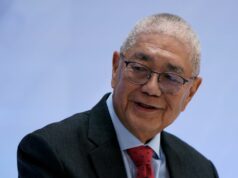The hidden fortification: Bamboos redefine home-building in Asia
BAMBOO is native through most of Asia — from the tropical jungles of Thailand and Vietnam, to the resort villages in Bali, to the periphery of the Angkor Wat in Cambodia, to the Arashiyama grove in Japan, and to both rural and urban Philippines.
The fact that this sun-loving grass is abundant in this region – such that it can grow into forests – made it earn a mixed reputation: to villagers, a poor man’s material; and, to builders, a boost to the aesthetics of luxury villas, posh homes, and hotels.
But there’s a common denominator among these groups: bamboo is a sustainable material.
Asian builders can learn from their Southern and Central American peers whose lush sub-tropical bamboo forests have been a source of strength for centuries, shielding homes from earthquakes.
Colombian Luis F. Lopez, a structural engineer for bamboo construction, has been building homes from bamboo for the Philippines’ poorest since 2014. The houses he makes are not the traditional bahay kubo – they can withstand magnitude 8 or 9 quakes and supertyphoons with wind speeds of up to 250 kilometers per hour.
How such a lightweight material as bamboo could weather nature’s harshest elements has basis in science. Growing up in Central America, also a seismic area along the Ring of Fire, Mr. Lopez knew how his hometown did not lose lives to disasters.
“The best houses to resist earthquakes are [made of] bamboo,” the Colombian engineer said during a recent interview with BusinessWorld in Manila.
“In Latin America especially Colombia, there’s tradition to build bamboo houses but in a different way. You can’t see bamboos outside the house. That technique of construction came from the coffee region of Colombia.”
In 2002, Colombia became the first country in the world to have a regulation governing bamboo construction, with homes employing that bamboo technology as old as two centuries, Mr. Lopez said.
The Colombian, who moved to the Philippines in 2014 to become head for product development and quality control at organization Base Bahay, brought that technology to the Philippines taking into account another variable: typhoons.
“We just take the technology from Colombia and Latin America because in Peru and Ecuador, they have similar technologies. We take that technology, we just adapt to Philippines with the conditions of the Philippines,” Mr. Lopez said.
“We don’t have typhoons in South America. We need to reinforce the house to resist their strong winds… And we also take things from the tradition of the bahay kubo and tradition of the people to make the people comfortable with the technology.”
The University of the Philippines in Los Baños helped Mr. Lopez’s team in testing Philippine bamboo’s resistance to earthquakes, but the final experiment was made not thru simulations but amid a real typhoon, with his team setting up wind instruments, cameras and a weather station.
“We had two options: go to Europe or Japan and test that or go thru a wind tunnel which are too expensive… We just waited for a typhoon in real life,” the engineer recounts.
The team built three houses in Iloilo and another three in Bicol.
“Yolanda passed but didn’t hit the houses. The first typhoon that hit the houses was Glenda. And after that Ruby, then Nina… We have records of these,” Mr. Lopez said.
The result of the experiments was a home whose walls are huge frames made of bamboo with claddings three centimeters thick. And unlike in resorts or in the typical bahay kubo, the bamboo poles are hidden within that plaster mesh.
“It’s a light frame made of bamboo. Then we put plaster, only three centimeters of plaster in mortar cement. Plaster metal mesh and bamboo frame. No more,” he explained.
“Many people think that we replaced the steel for bamboo. No, no, it’s not like that. It’s a frame made of bamboo,” Mr. Lopez added, noting that the bamboo homes still use steel but not in amounts found in houses made of concrete hollow blocks.
“We have some steel balls for the connection.”
Base Bahay is a not-for-profit organization established in 2014 as a spin-off from the Hilti Foundation and the United Nations Economic and Social Commission for Asia and the Pacific (ESCAP) efforts to tackle urban housing, according to its website.
The organization has tapped foundations, mostly missionaries, to build affordable and disaster-resilient houses, with the first bamboo housing duplex inaugurated in Bagong Silangan in Quezon City.
It has also built 100 houses in Tacloban freely given to victims of Yolanda, one of the strongest cyclones to have hit the Philippines.
But with bamboo being a sustainable construction material, the goal is not just to build homes, Mr. Lopez said.
“The idea of Hilti Foundation is to make houses with sustainable materials that you can get from the country and make livelihood for people that produce those materials,” he said.
“We need to create the value chain for bamboo here in the Philippines.”
Base Bahay has a bamboo treatment facility in Negros, where mature poles are soaked to make them resistant to powder beetle infestation. The communities there produce 2,000 bamboo poles a month that the organization buys, therefore creating jobs.
The organization has built 400 houses in the Philippines so far and has set an annual target of 300 new homes.
“And maybe in three or four years more, we reach 500 per year,” Mr. Lopez said.
That meant new acres of bamboo shoots elsewhere in the country, and generation of more jobs — a cycle that other bamboo-rich areas can replicate and sustain. — Maria Eloisa I. Calderon



